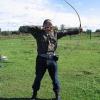Я варяг, думаю мне можно.
Ну тогда понятно... 8)

Опубликовано 15 Март 2009 - 00:34
Я варяг, думаю мне можно.
Опубликовано 16 Март 2009 - 11:41
Вот хорошая статья, про однолезвийники в Литве:
Kazakevičius V. Vienašmenių kalavijų atsiradimas ir raida Lietuvoje (Reziume: K voprosu o proisxoždeniji i razvitiji odnolezviinyx mečei v Litve [rusų kalba]), Lietuvos archeologija, Vilnius: Mokslas, 1981, t. 2, p. 43–58
Опубликовано 26 Март 2009 - 20:08
Балабол ОССР "Северный Зверь"
Опубликовано 30 Март 2009 - 10:38
Опубликовано 02 Август 2009 - 14:17
цитата из книги Swords of the Viking Age, автор Ian Peirce:
Single-edged Blades of the Viking Age
While the majority of surviving Viking Age swords have doubled-edge blades, single-edged blades coexisted throughout the period. Petersen describes single-edge blades without surviving hilt elements being found principally in the context of the transition from the Migration Period into the Viking Age. He considered these blades, most often found in western and central Norway, to have ‘evolved’ locally in that area by stages from the knife lenght scramasax. With the onset of the Viking Age, the same sort of hilts that are found on double-edged blades began to be applied to these single-edged blades, and in Petersen’s material, single-edged blades predominate among swords with hilts of his types C,F and G and are a common finding among types B, H and M. These single-edged blades are often a little longer than contemporaneous double-edged blades, being as much as 80 to 85 cm in lenght and even rarely exceeding 90 cm. Such single-edged sword blades have traditonally been regarded as the work of local smiths, rather than as beeing imported products from a specialized workshop. The usual lack of inlays or pattern-welding in defence of this attribution, but occasional exceptions, such as the pattern-welding observed in C24217 in Oslo, illustrated on p. 41, confound either this hypothesis or, more likely, that which holds pattern-welding to be limited to specialized workshops outside of Scandinavia. Single-edged blades also have a reputation of being thicker, and thus heavier, than double-edged blades. From two-dimensional photographs, a balance point well forward from the hilt would be expected, however, the three single-edges swords for which balance points could be measured in preparation for this volume had a balance point located an average of 20% of the lenght of the blade forward from the cross, as compared with 23% for all measured swords. Single-edged blades are unusual among swords with hilt types appearing after the close of the ninth century. Petersen reported two single-edged blades with hilts of type X from western Norway, noting them to have blades that, while remaining wide, were thinner than those single-edged blades from earlier in the Viking Age.
Опубликовано 02 Август 2009 - 14:49
Опубликовано 17 Июнь 2011 - 17:52
Опубликовано 19 Июнь 2011 - 21:32
Опубликовано 08 Июль 2011 - 17:25
Изменено: moa, 08 Июль 2011 - 17:27
Общие →
Раннее средневековье (IX-XI вв.) →
Новая находка погребения с кораблём.Автор: Dmitrij • Дата: 25 Мар 2019 |
|

|
||
Общие →
от Адама до Асгарда →
Случайная находка меча V-VI веков в ШвецииАвтор: Dmitrij • Дата: 05 Окт 2018 |
|

|
||
Служебные →
Пивнушка →
СМИ, Общество и Историческое Холодное Оружие - 20 Лет Спустя!Автор: Gladifer • Дата: 08 Июл 2018 |
|

|
||
Общие →
Раннее средневековье (IX-XI вв.) →
Находка меча в НорвегииАвтор: Dmitrij • Дата: 06 Сен 2017 |
|

|
||
Общие →
Раннее средневековье (IX-XI вв.) →
Поиск информации о мече - RTАвтор: sasa • Дата: 09 Авг 2017 |
|

|
0 пользователей, 0 гостей, 0 невидимых